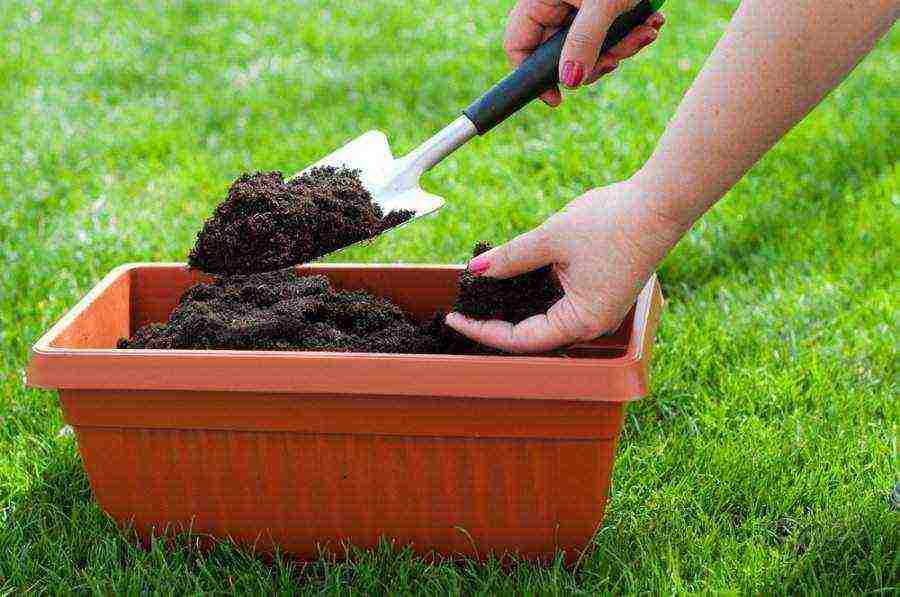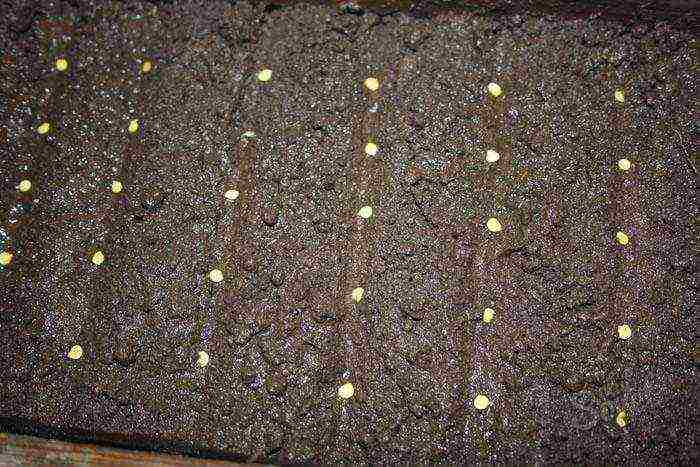Content
Growing sorrel on a windowsill
 Good afternoon friends!
Good afternoon friends!
A perennial herb sorrel has long and deservedly acquired a reputation for healing, rich in phytonutrients useful for the human body. This garden healer exhibits anti-inflammatory, antiscorbutic, tonic, stimulating digestion, hemostatic and tonic effects.
Before talking about how to grow sorrel on a windowsill I will briefly describe the composition of the plant and its beneficial properties.
Types and composition of sorrel
Although more than 200 varieties of sorrel are known in the world, most often gardeners grow ordinary sorrel (sour), which is a representative of the buckwheat family.
The shoots of the plant contain a whole complex of vitamins (B2, C, B1, carotenoids, thiamine, rutin, K, PP) and antioxidants, organic acids, including oxalic acid and its salts, dietary fiber, flavonoids, minerals (micro- and macro - elements), glycosides. Sorrel root is rich in tannins, resins, essential compounds, calcium oxalate, caffeic acid.
The benefits of sorrel
The leaves are successfully used as an effective remedy for vitamin deficiency, especially in the spring. Sorrel is recommended to be included in the diet of patients suffering from anemia and cardiovascular diseases, since plant components, especially phenolic substances and rutin, strengthen capillaries and exhibit anti-sclerotic properties.
Regular inclusion of sorrel in the menu, as a rule, as the main ingredient of green borscht or vitamin spring salad, improves appetite, enhances intestinal motility, activates digestion processes and helps the body effectively get rid of processed products, decay, toxins and accumulated toxic substances.
How to grow sorrel on a windowsill and care for a plant
You don't have to wait until the next season starts to feast on sorrel leaves and cook your favorite healthy dishes. In winter, you can perfectly grow sorrel on a windowsill or a glazed loggia.
Planting material
For forcing greenery, the rhizomes of a 2-4-year-old plant with a large number of growth buds are used. Sorrel is also grown from seeds. The following varieties develop most harmoniously in the conditions of an apartment: Maykop, Altai, Odessa broadleaf.
Lighting and temperature control
It is advisable to set up a mini-vegetable garden on the sill of a window facing south. However, sorrel is one of the few leafy greens that tolerates shading well. Based on this, it can be grown on the windowsills of the northern (northeastern, northwestern) windows.
In winter, when the daylight hours are already small, and most of the days are cloudy, so that the greenery does not stretch too much, additional lighting can be installed. To do this, it is enough to place fluorescent lamps at a height of 60 cm.
The plant is cold-resistant, therefore, in the room where it is grown, the temperature can range from + 5 ° C to + 20 ° C. If you have a glazed balcony where there is no frost (although the greenery can withstand frosts down to -7 ° C), then containers with sorrel can be placed there.
Soil and planting capacity
The most favorable for plant development is slightly acidic, loamy, fertile soil.Sorrel grows well in drained peat soil. The soil mixture (if it meets these characteristics) can be brought from your site and calcined in the oven for about an hour (to surely get rid of the pathogenic bacteria living in it). Or you can use a commercially available universal weakly acidic substrate.
Any container is suitable for growing sorrel. It is best to put together a wooden box, in accordance with the size of the window sill or the space allotted on the loggia, but you can also use plastic containers, as well as flower pots from a variety of materials. Fill the bottom of the planting container with expanded clay or pebbles to create a drainage layer. It is desirable that the containers have openings for the removal of excess moisture.
Planting and leaving
The seeds are sown to a depth of about 0.8-1.1 cm, falling asleep in the grooves. The optimal distance between the rows is at least 7 cm, so you create good conditions for the development of plants. Depressions with seeds should be sprinkled on top with sifted ready-made substrate or humus. Sowing sorrel can be carried out every month all year round (in different containers). This will give you the opportunity to continually re-harvest.
Some time after the emergence of shoots, it is advisable to thin them out, leaving the shoots at a distance of about 4 cm from each other. Sorrel loves moisture, so make sure that the soil is always moist. Loosen the soil periodically with a fork or toothpick.
Top dressing is carried out with any universal complex fertilizer intended for indoor flowers, 1-2 times a month, diluting the solution in accordance with the instructions.
Forcing greens from the rhizome is carried out in boxes at a temperature of + 17- + 20 ° C. A root is planted in a planting container prepared as described above, the soil is abundantly moistened and periodically fed.
Harvesting
After you have succeeded grow sorrel on the windowsill, and the leaves have reached a height of 8-10 cm, they can be carefully cut with scissors, along with the petioles, taking care not to damage the growth buds. It is recommended to immediately use the leaves after harvesting, adding to the dishes - this way they retain the greatest amount of active biological components. See you!

Sorrel is a perennial herb that belongs to the buckwheat family.
In the first year after planting, a rosette with basal leaves is formed, and in the second year, a flowering stem is formed.
…
The leaves of this plant are entire, arrow-shaped, petiolate, alternate with a pronounced central vein. The stalk of the sorrel reaches a meter in height, it is erect and ends at the top with a paniculate inflorescence.
Flowering begins in July - these are small dioecious inflorescences. The plant in question has been in demand since prehistoric times for all peoples; it played a large role in nutrition even in the days of gathering.
As a garden crop, sorrel began to be grown in the Middle Ages, but now it is grown everywhere and grows wild in meadows.
Features of growing spinach.
Learn how to grow celery at home here.
Secrets of planting beets
The benefits of sorrel
- Sorrel leaves help to satisfy the vitamin hunger in the spring, when a person especially lacks them.
- The plant is used for cooking cabbage soup and salads, for making pie fillings.
Sorrel tastes good and is very popular among the people as a food plant, it resists the development of putrefactive processes in the intestines, improves digestion.
- It is best to consume the leaves of the plant harvested before flowering in late May.
- Sorrel increases the secretion of gastric juice, so people with kidney disease, gout, urolithiasis, gastritis with high acidity and gastric ulcer should be careful when eating it.
- Healthy people should also eat sorrel in moderation, as the high oxalic acid content of the plant can irritate the kidneys if consumed too long and often.
- In folk medicine, sorrel is used as an antiscorbutic agent.
- The plant helps to improve the function of the gallbladder, liver, stimulates digestive processes, is used for skin rashes and itching.
Secrets of planting asparagus beans.
Learn how to grow peas
Standard fit sorrel
Sorrel should be planted in a well-fertilized area. These can be beds where beets, carrots, white cabbage and cauliflower, celery or radishes, parsley or potatoes, and cucumbers previously grew. In such a soil, all organic and mineral elements are contained in sufficient quantities. It is best to use seeds of the second year of storage for planting.
Seed germination is carried out at a temperature of 15 to 23 degrees Celsius. Watering the plant is carried out in accordance with the weather conditions: forget about watering for a while if it is hot outside, since flower stalks will grow at this time.
Transplanting is not required for three years after planting. A transplant will only be needed when smaller and coarser leaves begin to grow next year. The reason for the decrease in yield is the increase in the volume of oxalic acid.
When growing sorrel, you should use top dressing in the form of organic elements, minerals and fertile substrates. Loamy soils and black soil work best.
If you are not able to provide fertile soil, then it is the use of fertilizers as top dressing that will save the situation. Provide good watering, as lack of water will not form large enough leaves, but too much moisture will cause the sorrel root system to die and freeze.
It is best to use a solution of bird droppings, mullein, urea with superphosphates, as well as nitrogen and potassium fertilizers as top dressing. Nitrates hardly accumulate in greens.
Growing sorrel at home
Sorrel can be grown in the garden and even at home on the windowsill. Grow best at home: Odessa broadleaf, Altai and Maikop varieties.
The plant can tolerate a little shading without any particular complications, so it is better to choose a north-west or north window for growing. The room temperature can be from 5 to 20 degrees, under such conditions, growth will be optimal.
It is best to choose acidic loams, rich in humus. You can also use a slightly acidic soil of a universal type.
The depth of the grooves for planting should be 0.8-1 cm. Make a distance of 6-7 cm between the rows, fill the grooves with finely sifted humus.
After descent, thin out the plant and leave a maximum distance of 5 cm. Water your home-made sorrel regularly, making sure that there is always a damp substrate in the box. Feed with granular or concentrated fertilizer a couple of times a month.
Do not forget about pests - it can be a rhubarb weevil, a sawfly, or a sorrel leaf bite. Propagate sorrel with rhizomes or seeds.
Features of growing strawberries using Dutch technology.
Get to know the dangerous pests of red currants
Many people grow sorrel at home. You can also follow the example of our grandmothers and arrange a garden bed on the windowsill. Sorrel will always be at hand, besides, green plants release oxygen and purify the air.
During the germination period, the plant needs sunlight, but later it perfectly tolerates shade and even needs it. For planting sorrel, you should choose a bright and well-ventilated area. In this case, it is a window sill, so there will definitely not be any problems with ventilation.Experts recommend growing plants on windowsills that face west or east.
First you need to acquire soil. You can buy it or just dig up at your dacha. When buying, make sure that the soil is intended specifically for garden plants, and not for flowers. You will also need one or more seedling boxes. Plastic or wooden options with holes in the bottom are suitable. Please note that they must fit on a windowsill. Pour small pebbles at the bottom of the box, then put coarse-grained sand and soil directly.
Sorrel, which grows for three years, is ideal for planting. Dig roots out of the ground in October and store in a cool dry place until planting. In December, take the roots and shorten them by 10-12 cm. Then carefully plant them in boxes with prepared soil to a depth of 15-17 cm. To prevent the rosettes of leaves from growing too much, plant them tightly to each other.Keep the temperature in the 10-12 ° C range for a week, then turn it up to 18-20 ° C. Water the roots well for the first time after planting. Subsequently, water the sorrel as the soil dries. After 30-35 days, the plant will be ready to eat. If you take proper care of your sorrel, you can harvest three crops in a row before April!
Another option is to germinate the seeds in the soil. Be sure to check them for quality before planting. To do this, take a saucer and pour water on the bottom. Put a pinch of seeds in there. Place the saucer in a warm place and after two days see if sprouts have appeared or not. Moisten the soil and place the sorrel seeds in small holes 1 cm deep.The distance between the beds should be about 6-7 cm.
Use the following formula to fertilize sorrel. Take 30 g of nitrate solution, 40 g of superphosphate and 20 g of potassium chloride. Dissolve these ingredients in 10 liters of water. Use 0.5 liters at a time. As fertilizers, coffee grounds, a decoction of onion peels, or dormant tea are also suitable. Feed the sorrel with fertilizer twice a month.
Now you know how to grow sorrel on a windowsill. Remember to water and fertilize the plant regularly. With proper care, sorrel will grow very well and quickly!
Growing sorrel at home in winter is a great way to make up for the lack of vitamins in the body at this time of the year. This can be done in two ways.
Sorrel is a rather popular plant among the people. It has not only a pleasant taste, but also has medicinal properties: it improves digestion and counteracts the development of putrefactive processes in the intestines.
For growing sorrel in indoor conditions, it is best to use the Maikop, Altai and Odessa broadleaf variety.General requirements for growing sorrel The plant tolerates shading well, therefore, for growing sorrel at home, you can set aside windows facing north or northwest, but it grows better on eastern windows.
The plant is also not picky about the temperature, it feels good in the range from 5 to 20 degrees. The soil for planting must be slightly acidic, rich in humus. Sorrel grows well in ready-made commercial soil for begonias.
Growing sorrel from rhizomes
It is good to use rhizomes for growing sorrel at home. In this case, the plant should grow in the garden for 3 years. They need to be dug out of the ground in the fall and stored in the cellar until planting.
Around the middle of December, the roots need to be pulled out and shortened by 10 cm, then planted in boxes with prepared soil to a depth of 15 cm tightly to each other. For the first week after planting, keep the roots at a temperature of 10 - 12 degrees, then increase it to 20 degrees.
First, after planting, the plant must be well watered. After rooting, watering should be carried out if necessary. After about a month, the sorrel will grow leaves ready to eat.Growing sorrel from seeds
If you haven't dug up sorrel roots in advance, it doesn't matter, you can grow it from seeds, but first check them for germination. To do this, pour water on the bottom of the saucer and pour seeds into it, leave them for a couple of days, use the sprouted seeds for sowing.
It is necessary to sow the seeds in the grooves to a depth of about 1 cm, make the distance between the grooves 6 - 7 cm. After sowing, fill the grooves with humus. If sorrel is sown at intervals of 30 - 40 days, then you can get its harvest all year round.
When seedlings appear, the plants should be thinned so that the distance between them is about 5 cm. You need to water the sorrel regularly so that the soil in the box is always moist. As a top dressing, I recommend using coffee grounds or sleeping tea - sprinkle them on the soil twice a month.
Such simple care will provide you with a harvest of juicy leaves until spring.







